Act II: Spider-Man’s Post 9/11 Tour
If you’re doing the tourist thing in New York, there’s perhaps nothing more touristy to do that to take a long subway ride from your Manhattan hotel across the East River and into Brooklyn, just so that you can walk over the Brooklyn Bridge into Manhattan. This is where our day starts.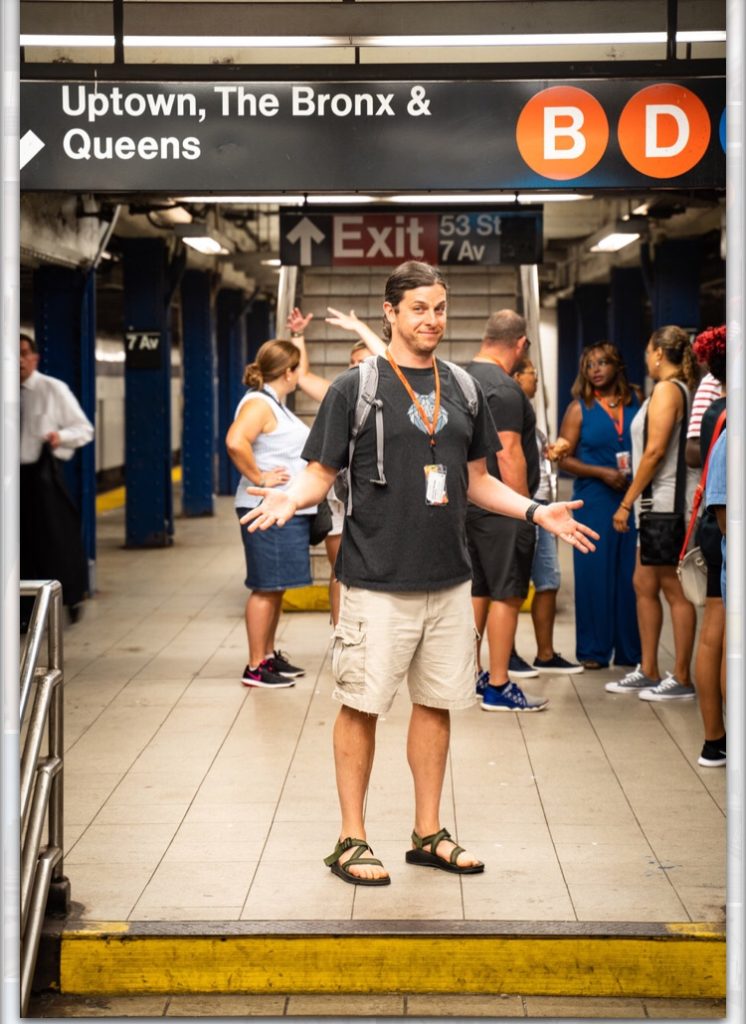
As we ascend the bridge, the view of the Manhattan skyline comes into view. And like every light pole, scaffolding, blank wall and empty space in the city, it bears the vestiges of the millions of people who have passed, slapping stickers and scribbling words of wisdom on the metal beams. Beneath the walkway’s transition from over land to over river, an old Asian woman patiently cuts fruit and sells mango and watermelon for $3 a pop to winded tourists. Local cyclists often brusquely fly by, muttering under the breath at the pedestrians who spill into the bike lane.
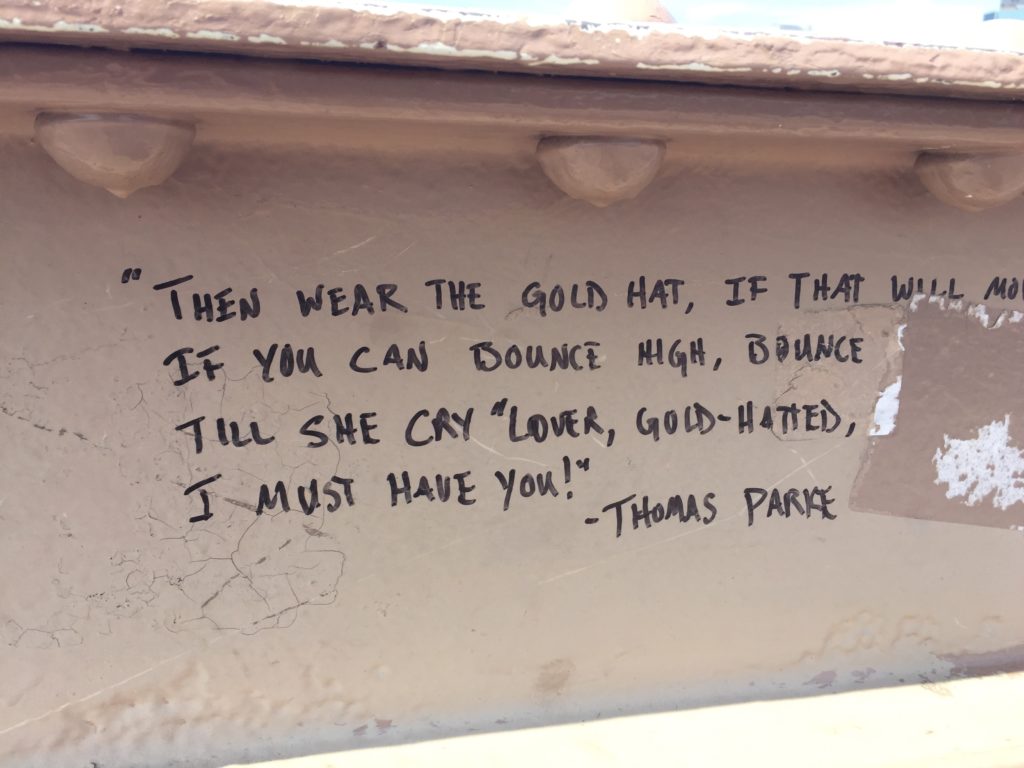
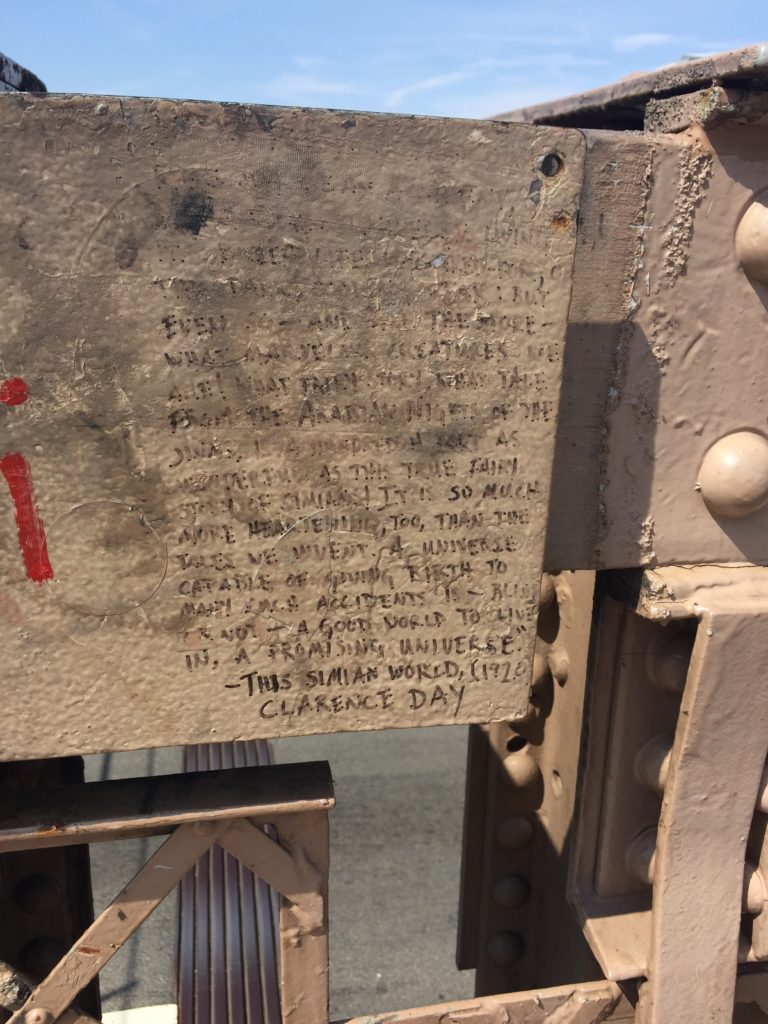
Otherwise, the walk is beautiful, full of laughter and ebullient conversation in our group, even those deathly afraid of heights. The bridge finishes the river and dips into southern Manhattan where snack carts and tourist stands wait to sell their wares. It’s about two miles of walking to start the morning as we pass City Hall Park on our right. Remnants of yesterday morning’s USNWT parade festoon the trees.
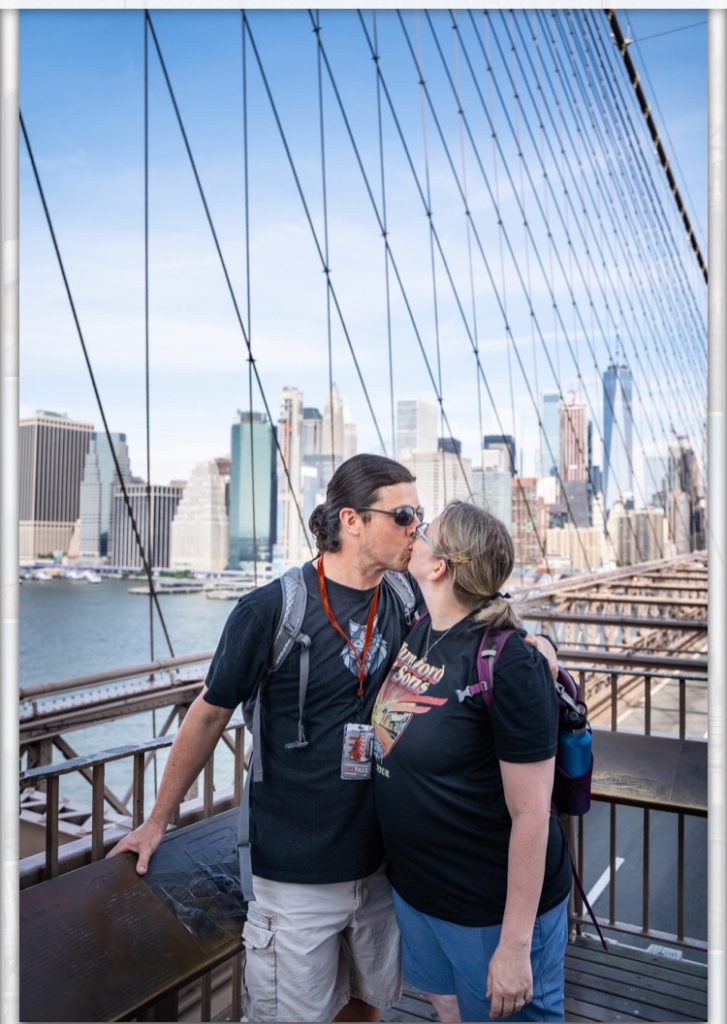
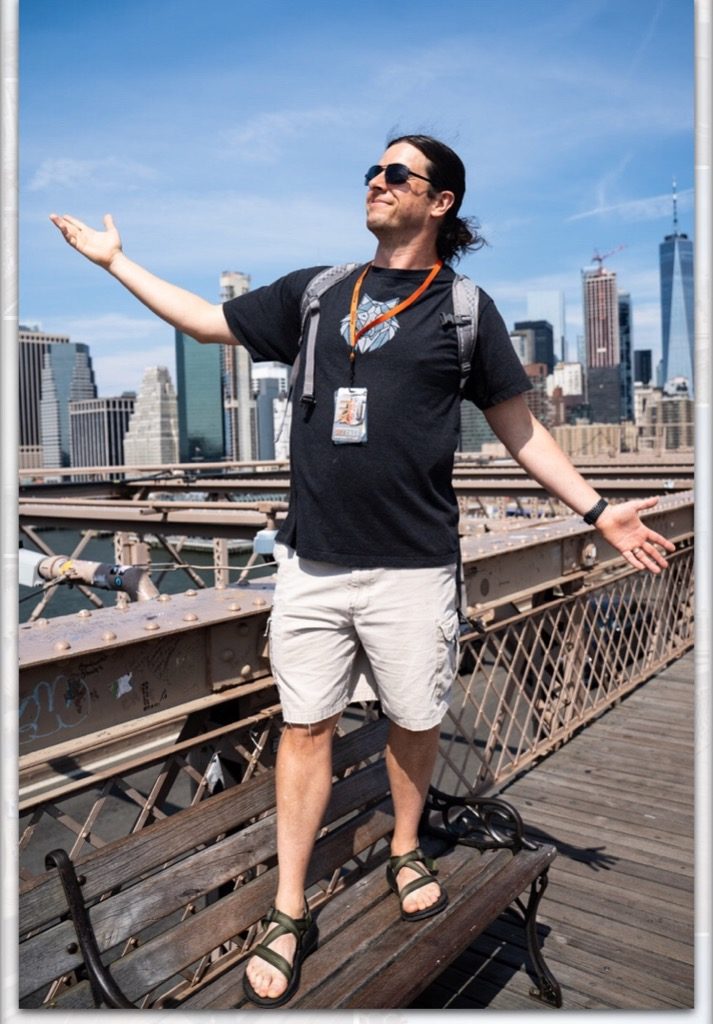
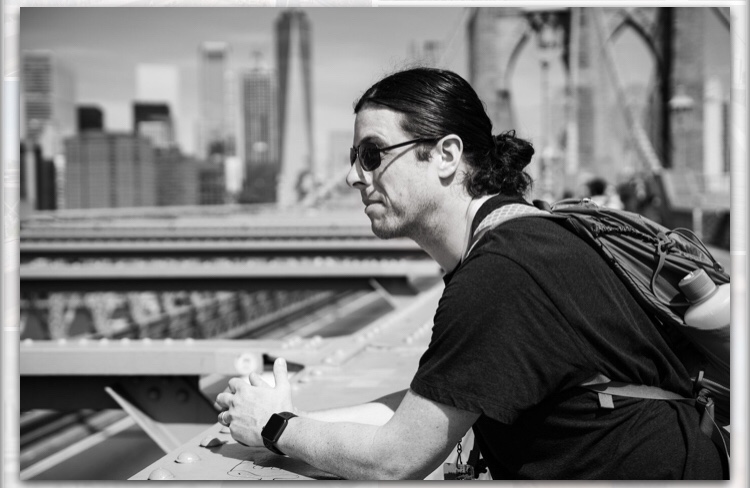
We briefly chat about George Washington outside the doors of St. Paul of Trinity. It seems a historical site with centuries old tombstones. However, I’m caught off guard by the solemnity as we enter the Chapel. I’d been to New York exactly once, pre-9/11, not enough to make me faze that the former WTC no longer dominated the skyline. For people who haven’t grown up here, it has been erased from a physical memory as easy as the Spider-Man trailer was pulled from theaters.
For years, I taught the Suzanne’s Berne’s“Ground Zero/Where Nothing Says Everything”as a descriptive essay in AP Lang. But with each successive year, the students were further and further removed from the horrors of 9/11 as a live and visceral memory; they’ve always lived in a post-9/11 world. They’ve seen video footage, but it seems like history to them, another thing they read in a textbook right beside George Washington. And somehow, what was once a discussion among people truly trying to grapple with the meaning of that day and its aftermath became just another essay for which I had to give historical context.
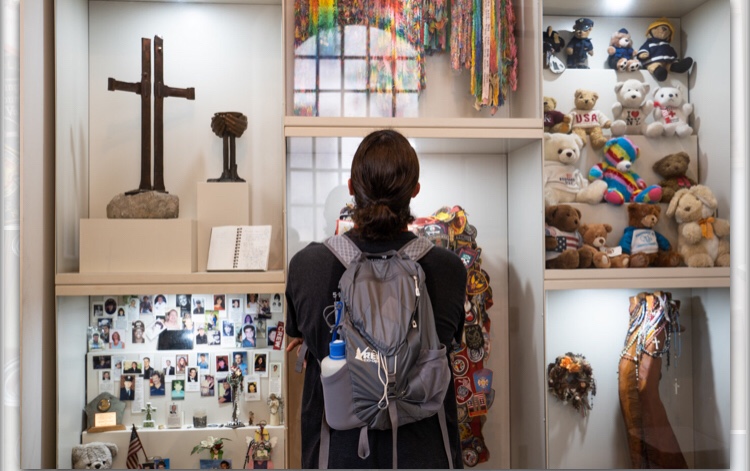
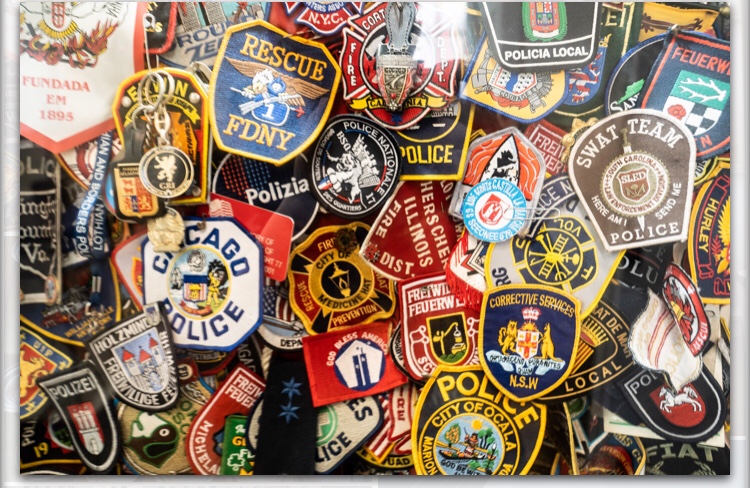
In the essay Berne muses about the emptiness of the space left by the former WTC, and wonders how the space will be filled. The chapel seems to be the place that remained steadfast throughout. From atop the new One World Trade Center, it is an isolated patch of arboreal beauty in the concrete jungle. Somehow, the graves—centuries old—the trees, the iron fence that Berne described as festooned in flags, notes and mementos (many of which are preserved inside on display), remained largely unscathed from the destruction.
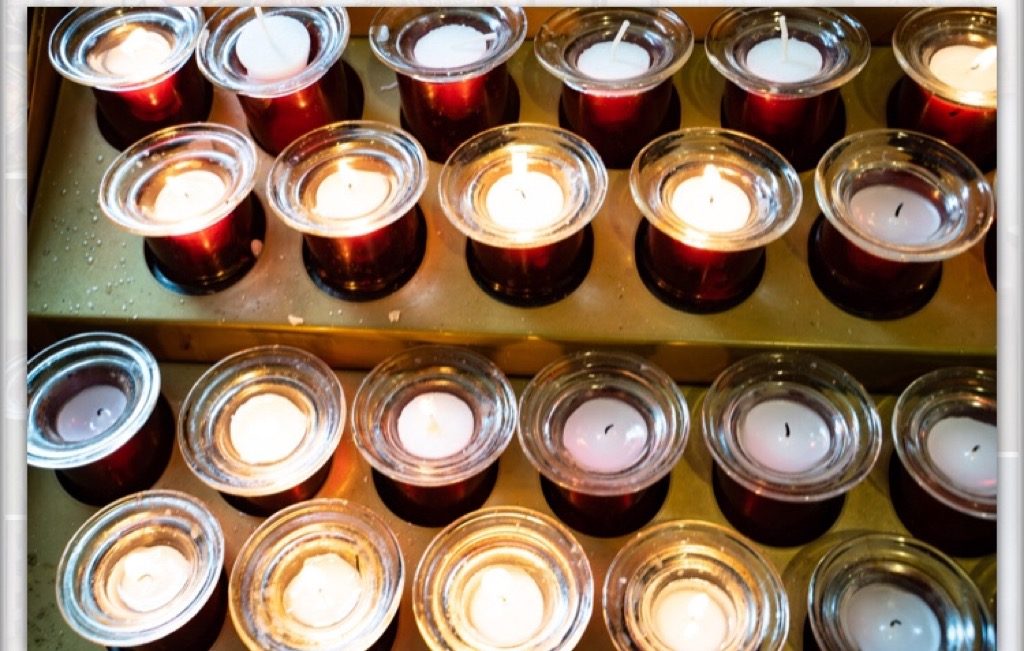
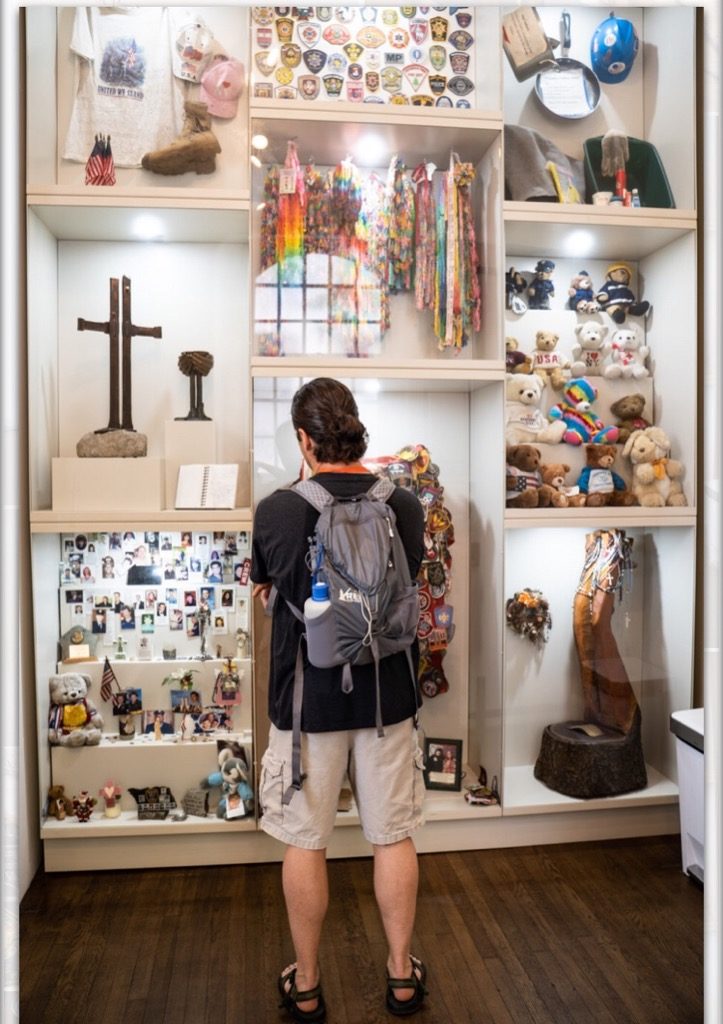
Inside, the church has been remodeled somewhat, but in a back room, one pew has been preserved to show the scratches etched as fire fighters interrupted sleepless nights to crash here amidst the chaos. The church, it seems, was both physical staging ground and spiritual beacon in those times.
In recognition of the fragility of life, we humans often erect temples of stone—adorned in radiant beauty—to house the ceremonies—christenings, baptisms, weddings, funerals—that conspire to hide this fact in perpetuity. And in these temples—in the best of times, despite the corruption of centuries—takes place the contemplation of our fragility and the compassionate care we offer to others because of it. In our time of need, it can provide a nexus for the unity that keeps us strong.
Outside, two of our group members share honest stories of their lives on that day that make my watching CNN for two hours seem unimaginable. Walking away through the cemetery, we begin to come into the rebuilt area of destruction. In the ashes of abject desolation grows art and innovation. To the right, colorful murals invite the viewer to move beyond the potential despair and aspire to peace and love. To the left is an immensely ornate train station, defying the traditional perpendicular lines of the NY cityscape—like a futuristic alien style, something that Superman may have found at home on Krypton. Or where Harry meets Dumbledore once he is split from Voldemort, so perhaps it is an appropriate place of rebirth.
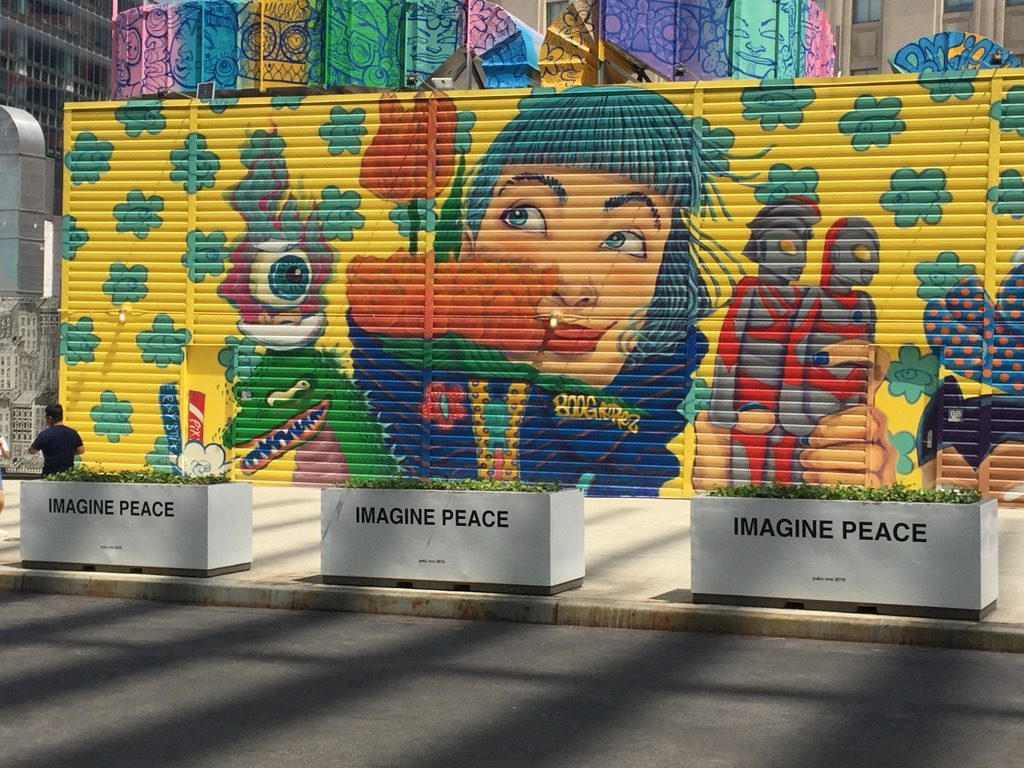
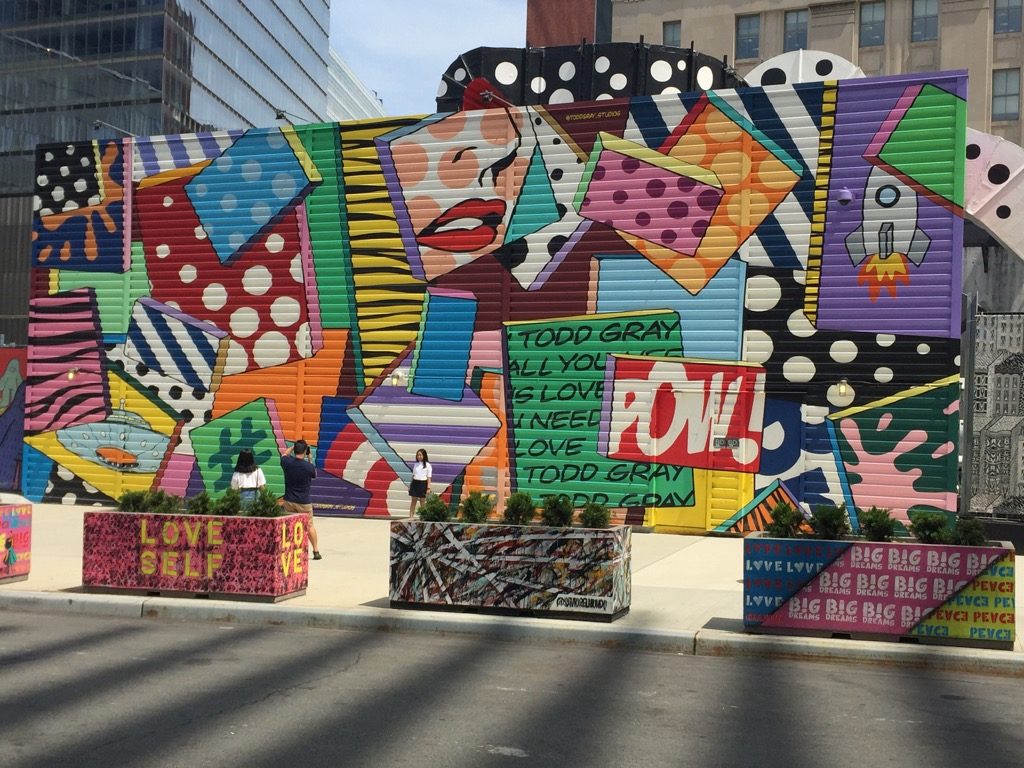
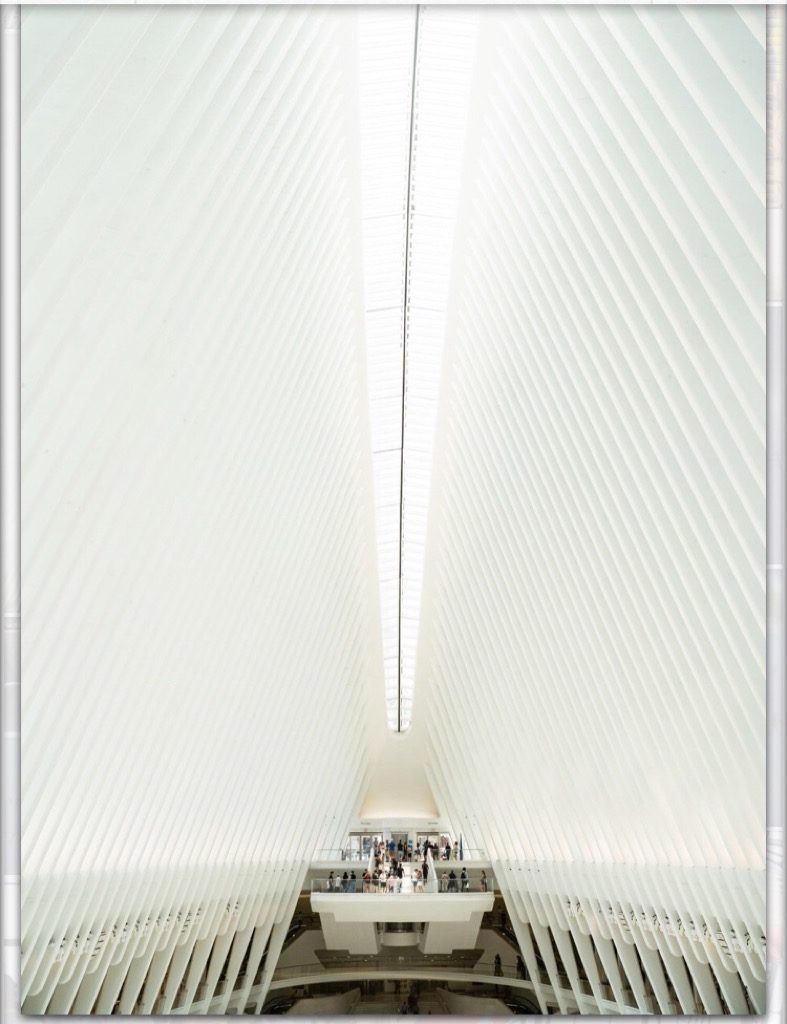
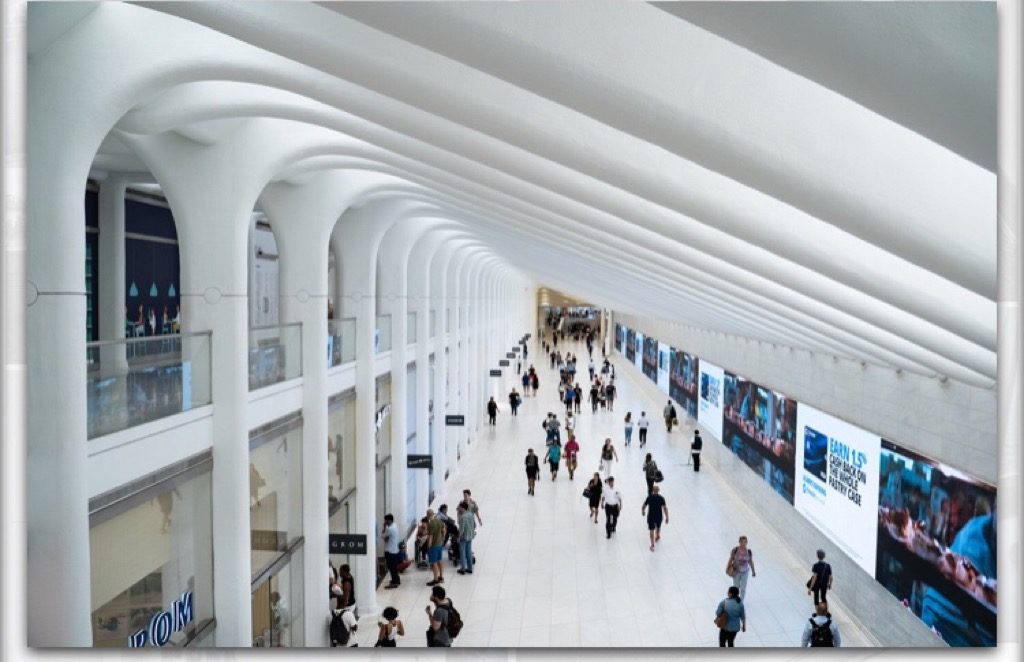
Further up the plaza are the former foundations of the original WTC. The pools—the subtle solution to the absence of space was to convert these massive holes into monuments of perpetual water. Large, reflective, four-sided waterfalls—the nothingness that Berne proposes. Around the perimeter, the names of the fallen, with birthdays commemorated with a single flower in the engraved name. In the space, as Berne suggested, the reactions of all fill the space. Some with solemn remembrance. Some with touristy schtick. Children, largely oblivious of the massive catastrophe that occurred before their birth, bounce around seemingly discordant ebullience.
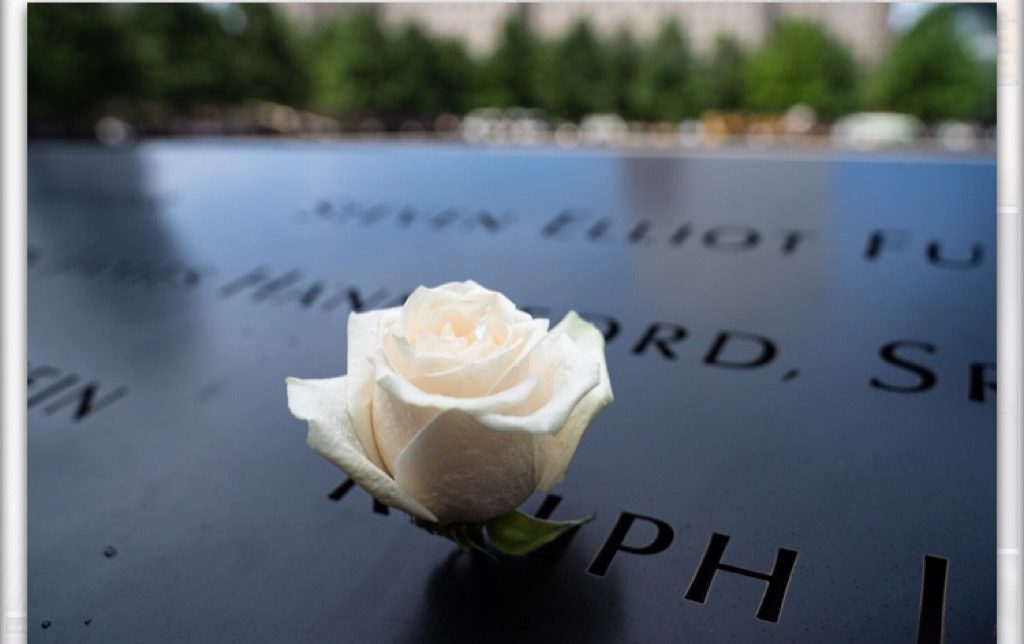

One of my friends who lived here marvels at the shiny new nature of the shopping center where we eat, flanked by high-end retail, the restaurants of Hudson Eats (as diverse as Chelsea Market, if a little more polished looking) flood with workers on their noon-day lunch. He hearkens back to a pre-destruction time when the area around WTC was kind of a shithole, and I think of Travis Bickle riding around the city streets, wishing he could clean it up. It seems the destruction did it for him. The center is gleaming and prosperous, packed to the gills with well-dressed, prosperous people. Nic meets a former student, and the four of us walk downstairs to a beautiful patio overlooking a yacht harbor that spills into the Hudson River. It seems that luxury has flourished in the fertilized earth left behind. Despite the pain and suffering of 9/11, it is clear that the city is determined to let new, opulent growth take the place of the rubble that was.
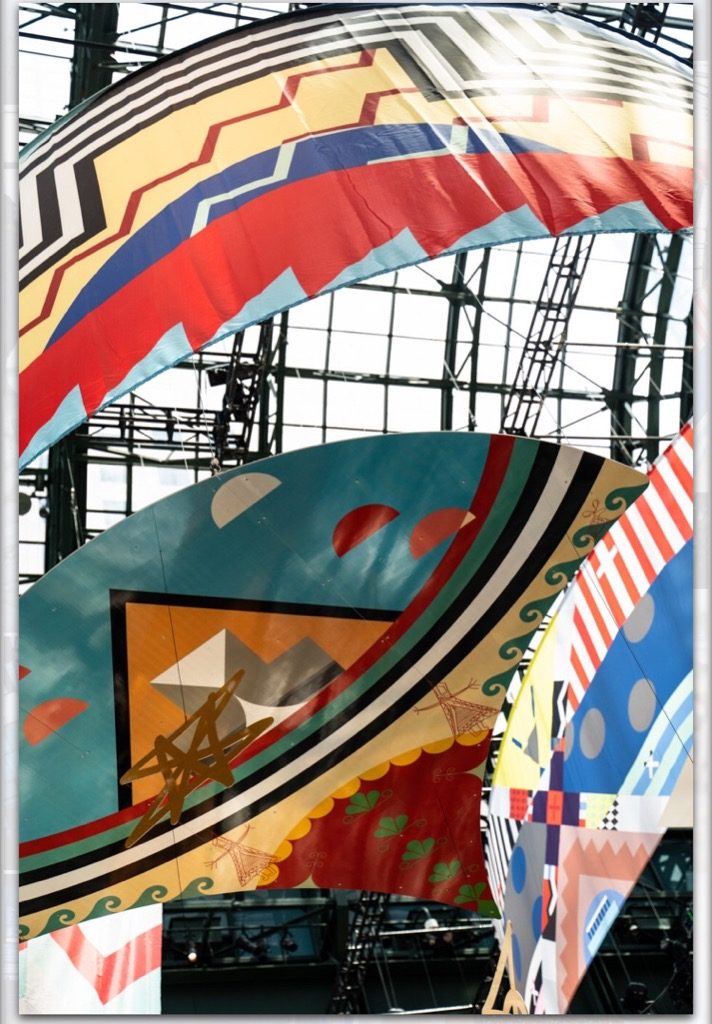
Nowhere is this more clear than on a trip to the observatory of the One World Tower. The patrons are feted with testimonials by architects and construction workers who count working on this building as the most important event of their lives. A video elevator rockets to the top, giving a visual history of the area, before allowing a 360 degree view of the entire area, dwarfing all other buildings, giving a clear view of all iconic areas of the city. We loll around the perimeter as people from all around the world snap pics of themselves with the city as background atop this lofty perch, herding their children in multiple languages. Our time ends, we are shepherded to exit through the gift shop amongst One World Tower posters, t-shirts, and hats for our purchase, and back down to the first floor with twisting video screens give the impression of riding the Wonka elevator
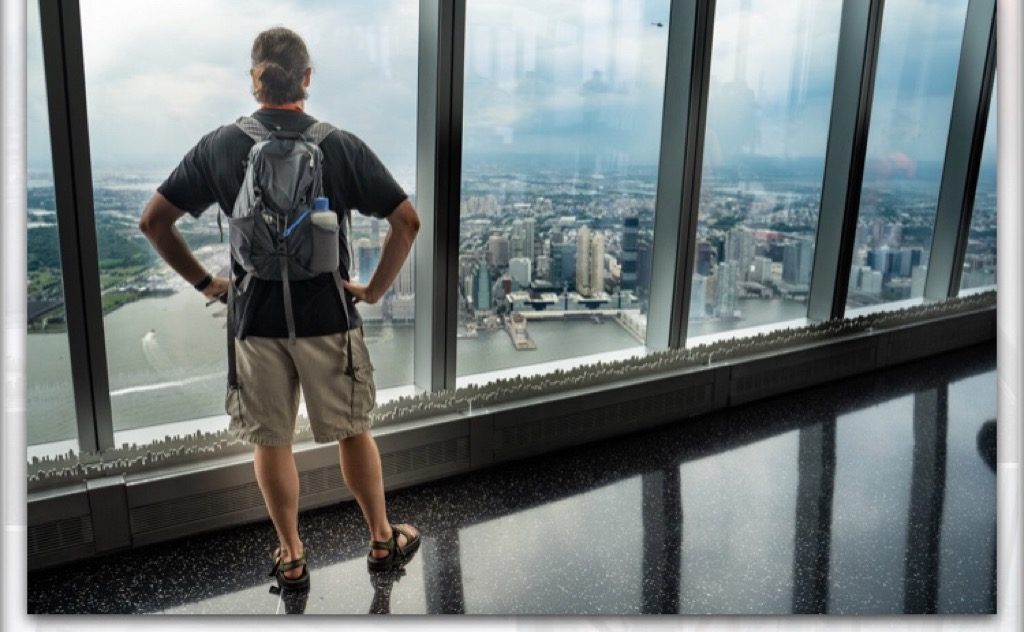
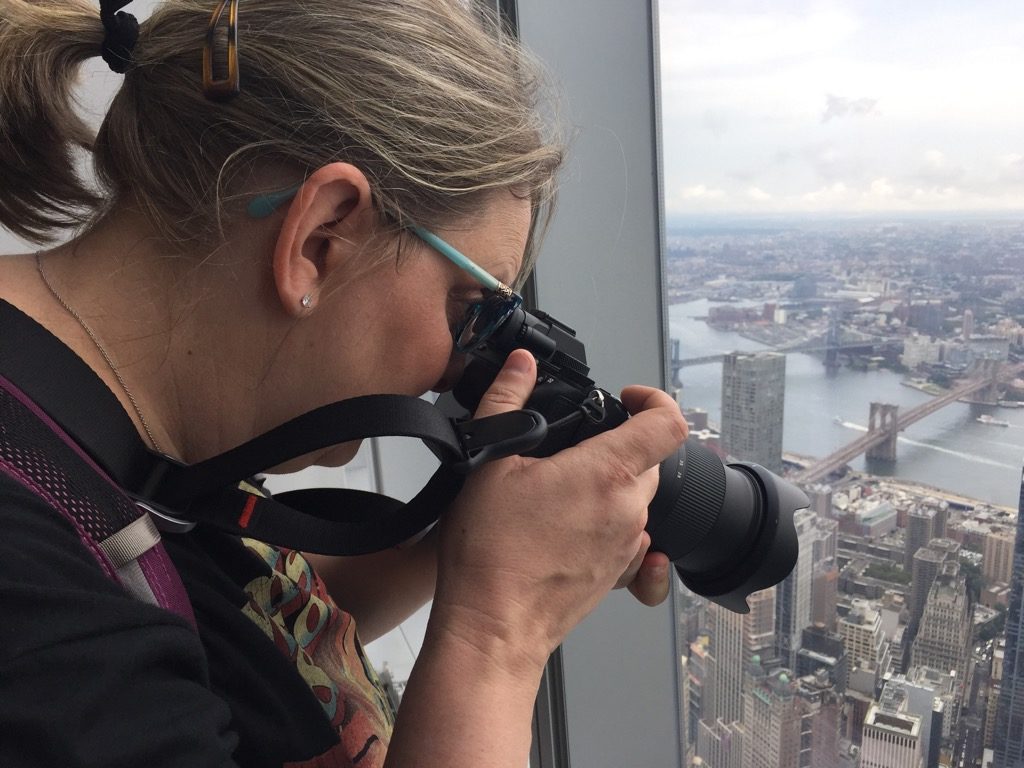
The mid-afternoon tourist lull hits as we near the Staten Island Ferry (another great setting of a Spider-Man action sequence). The rain begins lightly, but soon becomes more and more persistent to obscure our view of the fleeting Manhattan skyline and Statue of Liberty. We are at the terminal and strike up a conversation with a Criminal Law professor: it seems that grading papers is the bane of every teacher’s existence. He hates philosophy, but tells me in the nicest way. At 3:30, we are back, hitting the nadir of the day in energy.
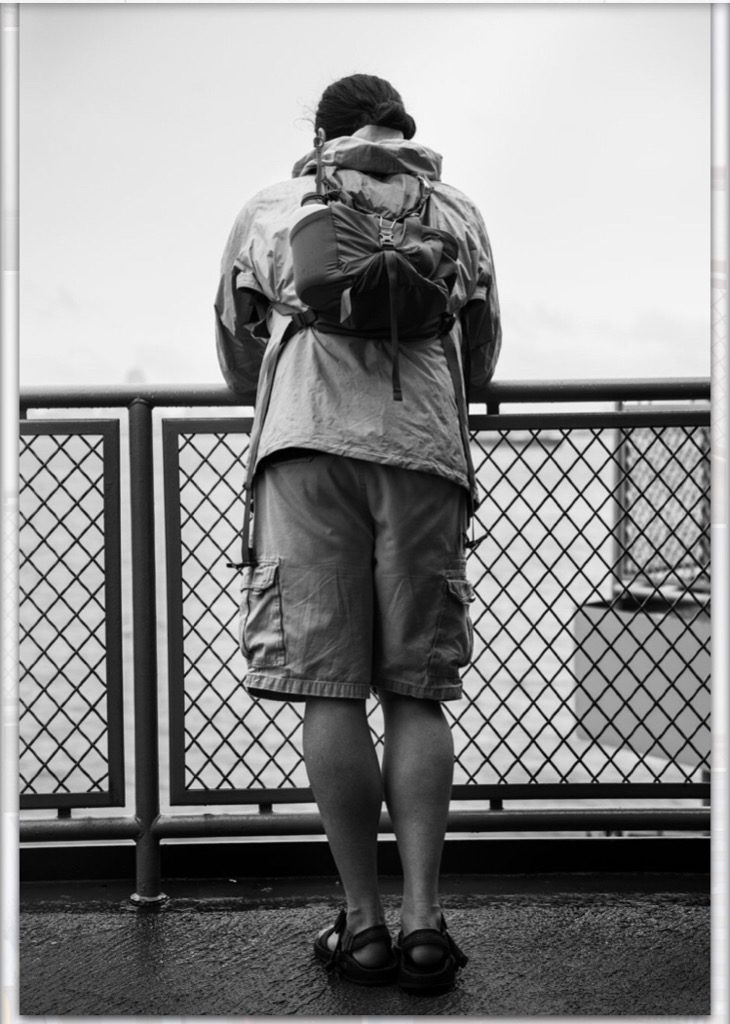
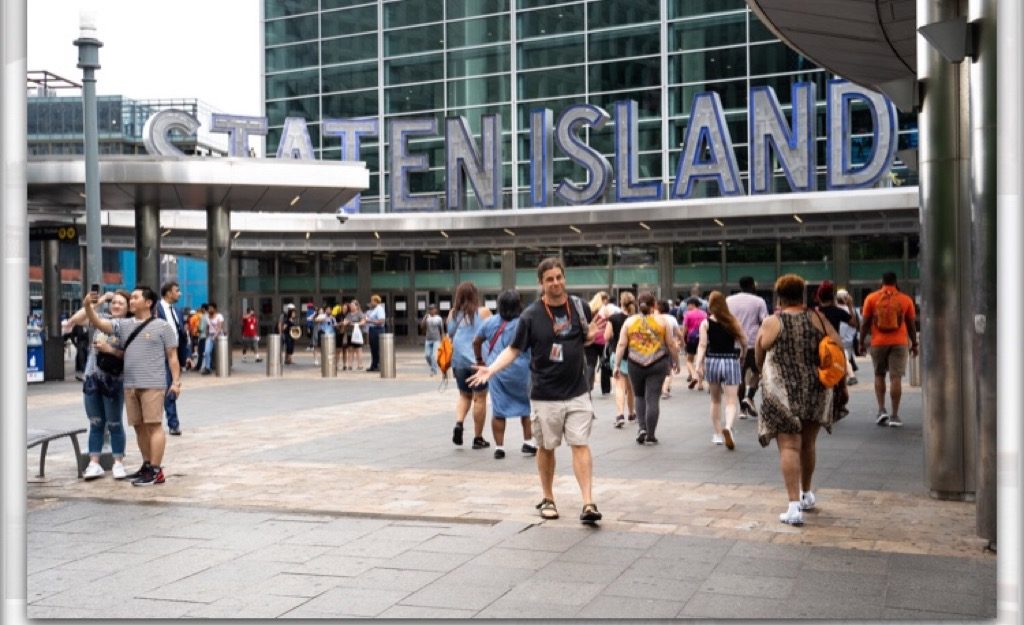
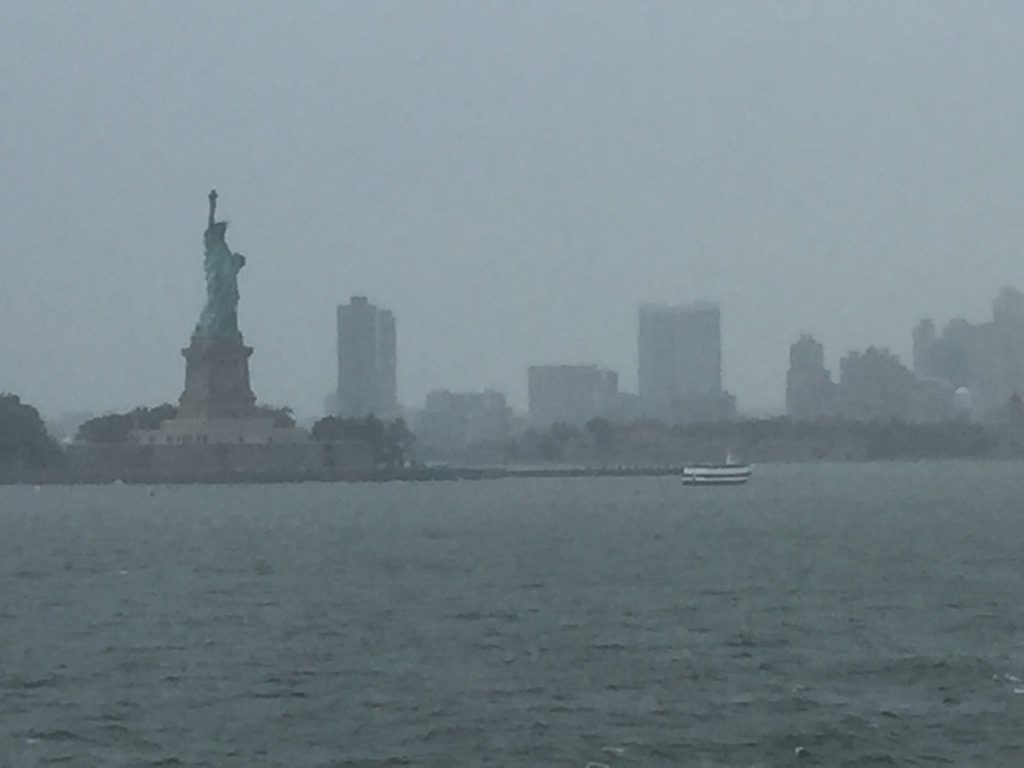
We take the subway back to the hotel for a quick refresher then back out in the rain to Times Square for dinner before the show. It’s rush hour, and the streets are a zoo. It’s hard not to get separated from others, and by this time, it seems that the urban hiking for the day is much, much more draining then any woodland path I’ve ever trod.
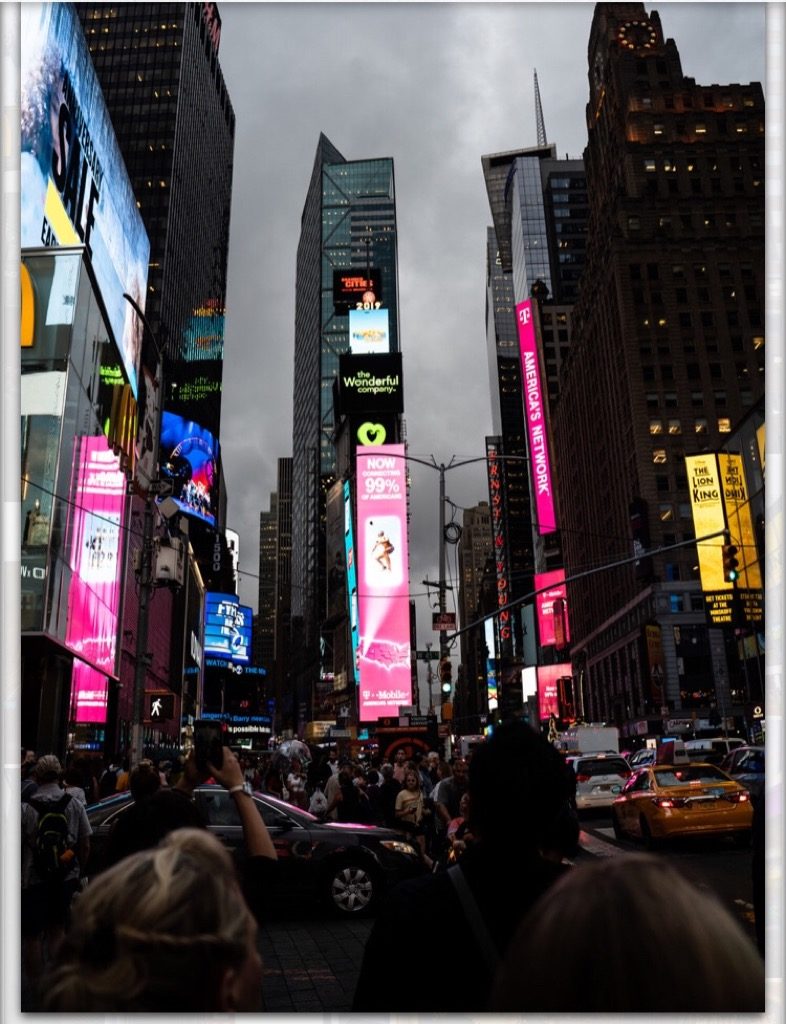
For dinner, it’s trendy and proximity, so I won’t even give the restaurant a plug. Nic and I desert the digs before dessert to catch some photos of the vast video vistas of Times Square. Soon, we head west to the show.
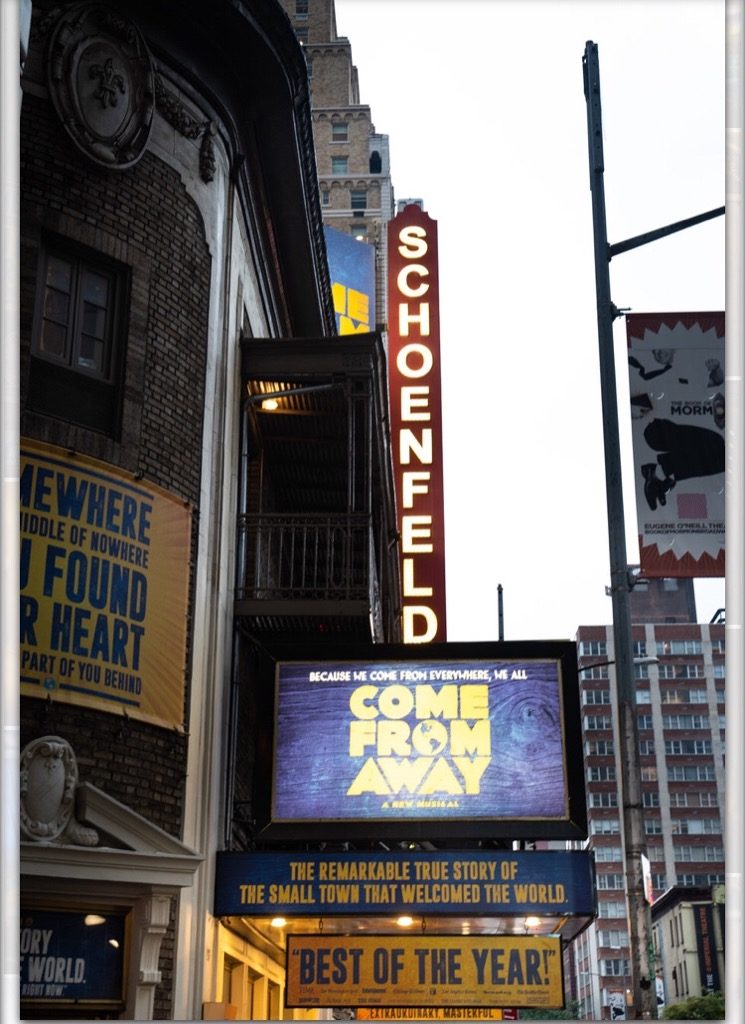
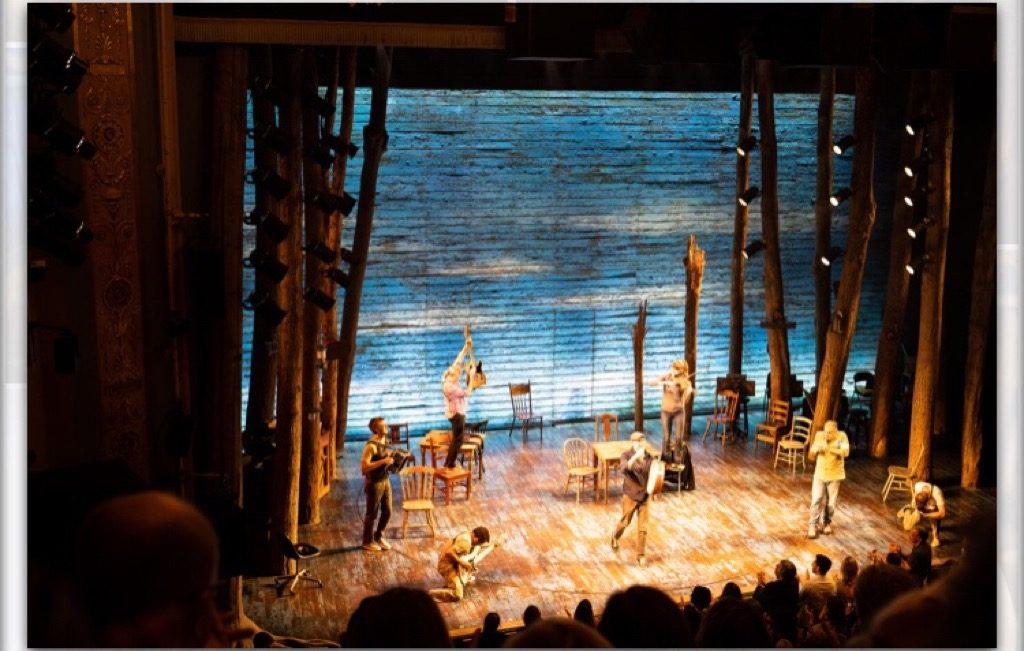
I’ll never claim that I’m a huge Broadway fan, but I don’t denigrate it. Nic knows all the shows and what awards they’ve won; I’m mostly along for the ride on this one. But Come From Away (a 2017 Tony nominated musical) is a perfect cap on the evening. The musical relays the true story of airplanes stranded in Gander, Newfoundland when the US closed its airspace following the 9/11 attacks. With a population of 7,000, the size of the town nearly doubled for a week while 38 planes sat idle on their runway. The musical, spirited with the accompanying Gaelic-style band to match the Scottish sounding brogue of the local accent, has about eight principal actors continuously switching roles to tell the story over a rollicking 100 minutes, a roller coaster of laughter and tear-jerking heartbreak, beautifully sung.
Over the course of the day, we have seen the many responses to how life changed in this city in that moment, from reverent prayer to artistic hopefulness to architectural grandeur to capitalistic innovation. Here was a more human take on the story. Humans giving to others in their most dire time of need. Toward the end, when the off-islanders express gratitude, the islanders simply say, “You would’ve done the same,” but none of the compulsory tourists accept that they would. Generosity borne of tragedy. In many ways, it is those moments that test our social fabric to see if we can withstand the threats of devolving into anarchy. For at least a few shining days, humanity proved its capability to love and give, immortalized in beautiful music and song.
The audience is in tears of rapture as the lights come up and the band plays raucously like a roaring pub band. We begin to exit, and Nic finds two guys from Newfoundland there to see the show. We make our way into the street where the sky is positively weeping.
Luckily, we’re only a few hundred feet from our destination as a handful of the group who went to the show decide to stop at Junior’s (apparently so famous that DeBlasio commemorated a “Junior’s Day” in 2018). Mere steps from so many of the theaters, it is packed at 10:00 and only gets more so as the night progresses. We all order decadent desserts—I get the apple crumb cheesecake, but there is much sharing: key lime, chocolate mousse, original strawberry. We sit and talk—perfect strangers a couple of days ago—about the show, the crowd, the trip, and life. It’s a joyous night of camaraderie in the city after so much walking, to sit and enjoy the food and company, even for an introvert like me.
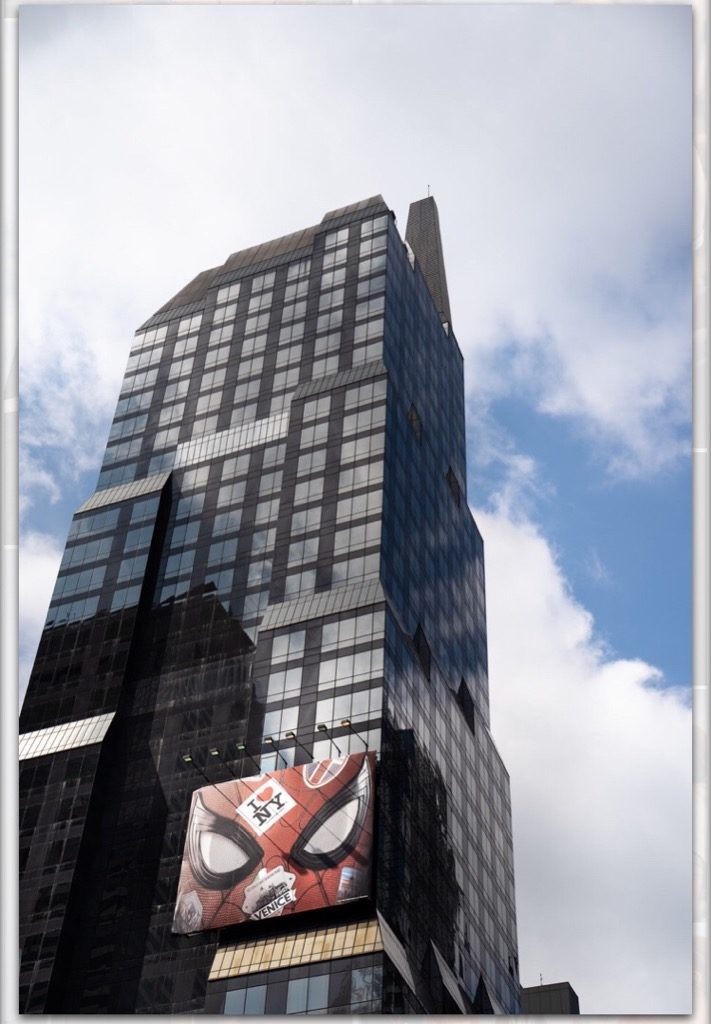
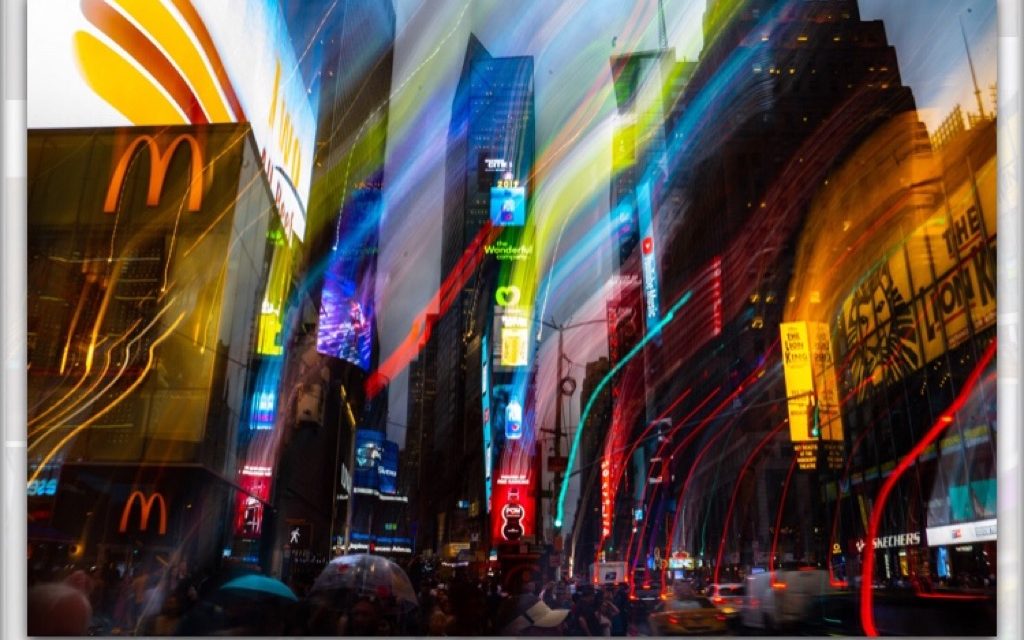
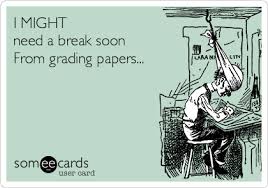
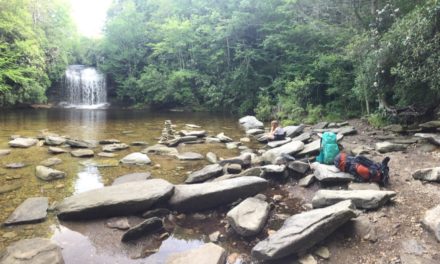

Recent Comments